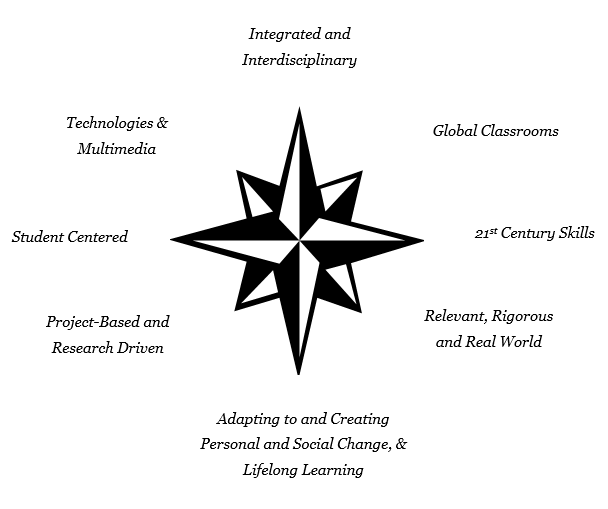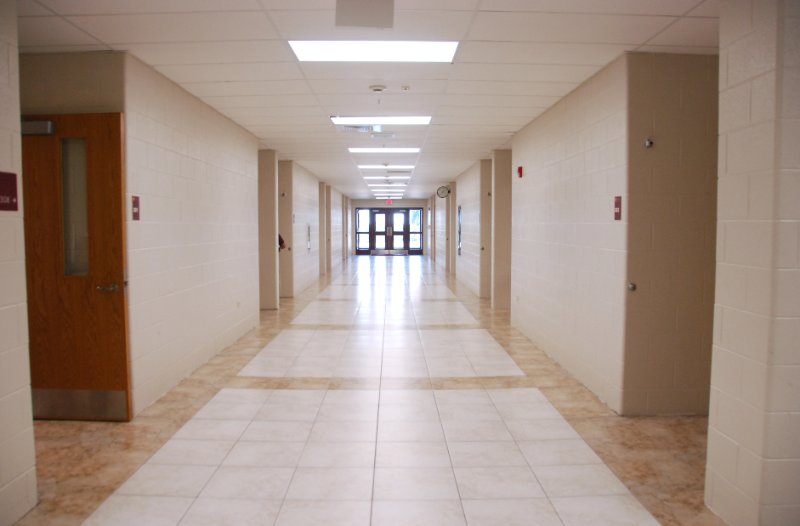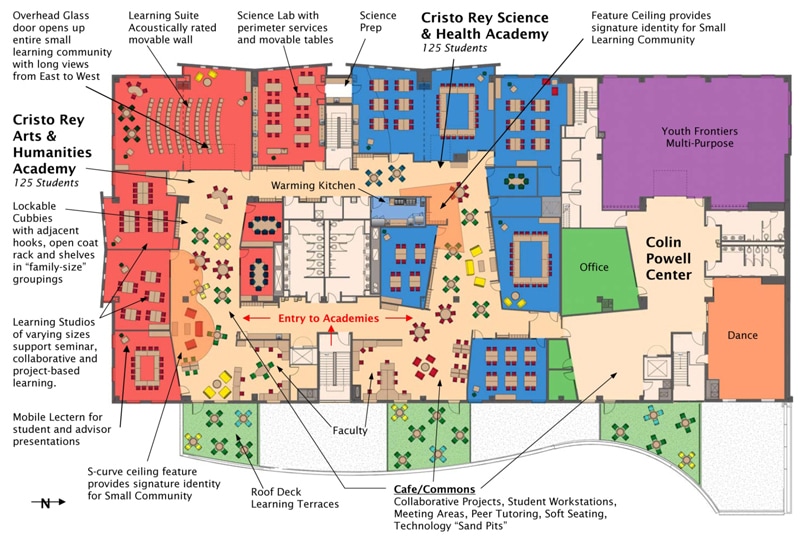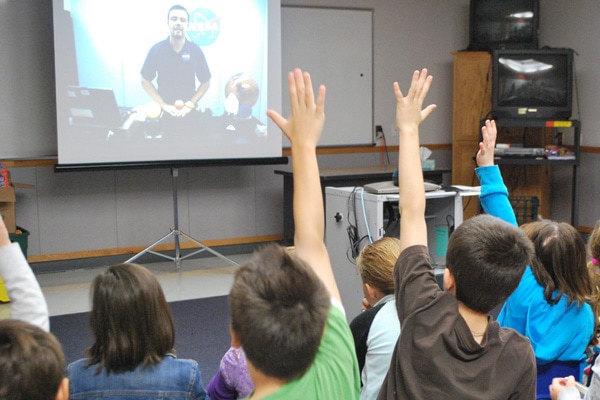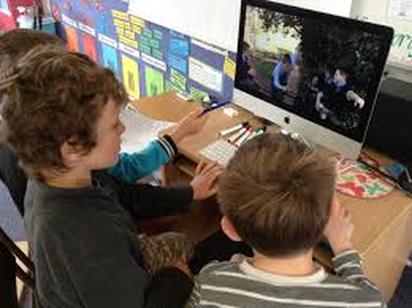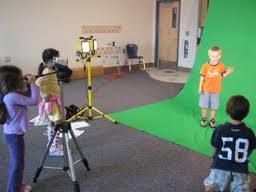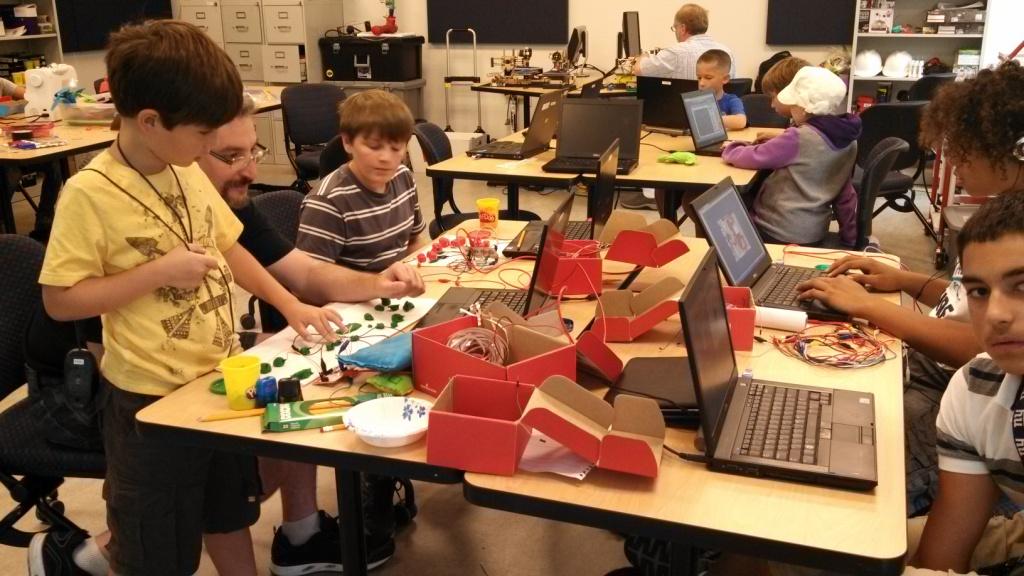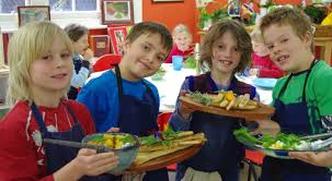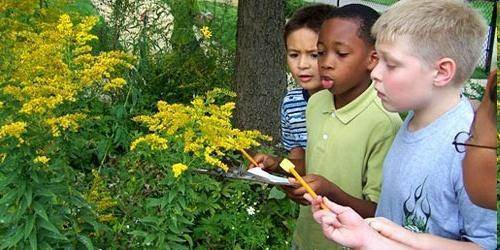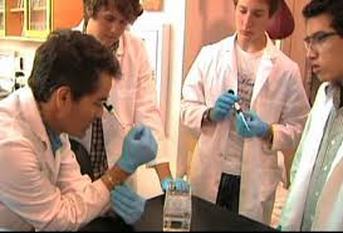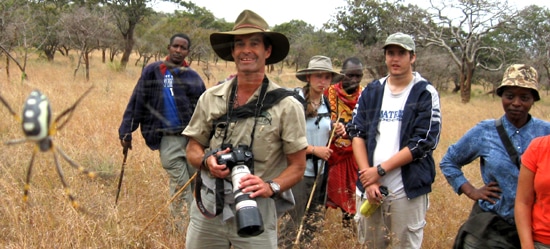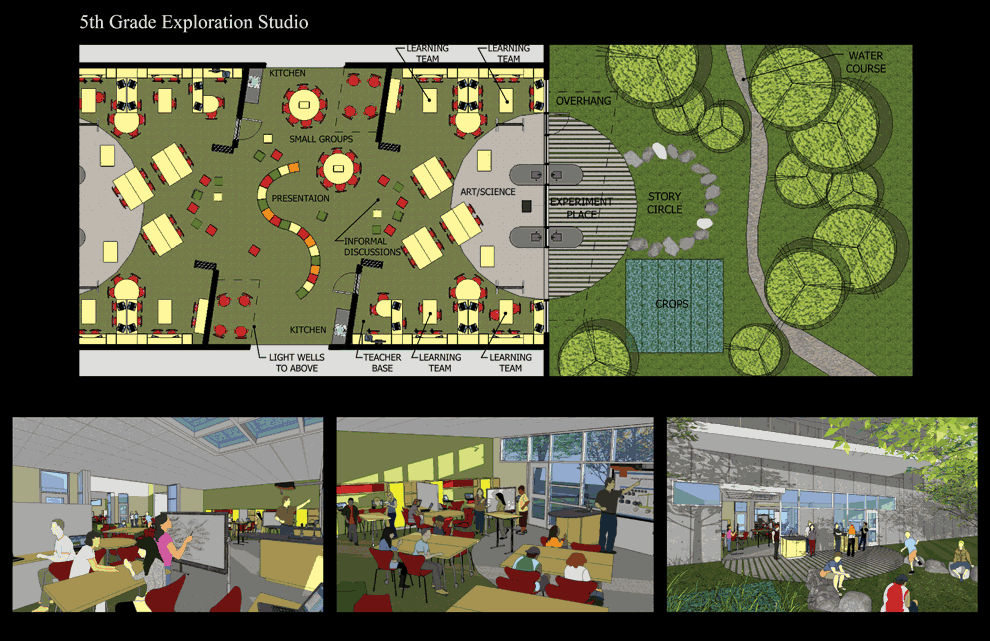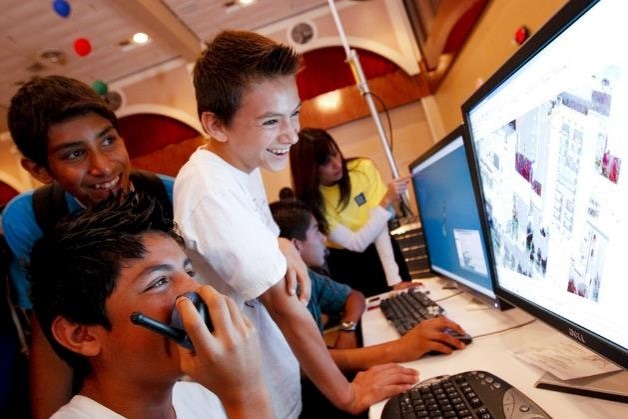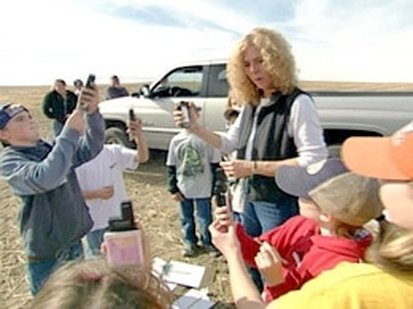P. K. Yonge Developmental Research School at the University of Florida, designed by Fielding Nair International
The Physical Environment and Compass #1
In the Framework for 21st Century Education 3 compasses are embedded within an intentionally designed Learning Environment. We begin with the Physical Environment. The two basic facets of the Physical Environment which we must design to support 21st century learning are the Facilities and the Schoolyard.
Within the design of the facilities we include the organization of time, space and people. We include the design, or arrangement, of furniture and resources. And, we connect the indoors to the outdoors seamlessly.
Within the design of the facilities we include the organization of time, space and people. We include the design, or arrangement, of furniture and resources. And, we connect the indoors to the outdoors seamlessly.
The design and use of the facilities and schoolyard may be evaluated based upon how well they support, rather than impede, the elements of the three compasses.
Compass #1 - Critical Attributes of Curriculum and Instruction
Integrated and Interdisciplinary
When a school building is designed using the factory model, "cells and bells", the chances of students experiencing high level, integrated and interdisciplinary curriculum is obstructed. Factory model, or cells and bells, schools tend to compartmentalize curriculum. While once this was limited to high schools, and perhaps junior high, departmentalization or the "silo effect" of curriculum now extends all the way down to kindergarten.
When a school building is designed using the factory model, "cells and bells", the chances of students experiencing high level, integrated and interdisciplinary curriculum is obstructed. Factory model, or cells and bells, schools tend to compartmentalize curriculum. While once this was limited to high schools, and perhaps junior high, departmentalization or the "silo effect" of curriculum now extends all the way down to kindergarten.
The image above, left, is a typical design. An obsolete relic of a bygone era, this continues to be the predominant design in schools across the United States and the world. To the right is a layout of a 21st century facility which is intentionally designed to support 21st century learning. First of all, there is no sign of the "egg crate" design - long halls with classrooms down each side.
Instead, the Cristo Rey Jesuit High School in Minneapolis, designed by Fielding Nair International, is organized into interdisciplinary academies. These are SLCs (smaller learning communities). Each SLC is populated with 125 students and a small team of teachers who plan and teach together. The student to teacher ratio is 17:1, and 96% of their students are accepted into a university or college.
The two academies shown here are interdisciplinary: they have the Arts & Humanities Academy and the Science and Health Academy.
Instead, the Cristo Rey Jesuit High School in Minneapolis, designed by Fielding Nair International, is organized into interdisciplinary academies. These are SLCs (smaller learning communities). Each SLC is populated with 125 students and a small team of teachers who plan and teach together. The student to teacher ratio is 17:1, and 96% of their students are accepted into a university or college.
The two academies shown here are interdisciplinary: they have the Arts & Humanities Academy and the Science and Health Academy.
Global Classrooms; Globalization
In our framework, a conscious effort should be made to integrate learning that connects the classroom to the community. This includes the local, national and international community. The world of the 21st century is globally connected, and students need opportunities to develop unique global competencies. This can only be done if students are actually learning and collaborating with people in other countries and cultures. This is done easily at all grade levels.
In terms of how a facility is designed, technologies should be made available so that students are able to connect easily with people around the world. This would include excellent wireless connectivity throughout the campus. Additionally, there should be large video screens for use when a group of students in one location is Skyping with a group of students in another location. There should also be software, most of which is available online at no cost, which students can use when collaborating on projects, real-time, with students in another location.
Below, left, students are interviewing an employee at NASA. Below, right, elementary students are collaborating with students in another country in a filmmaking project.
In our framework, a conscious effort should be made to integrate learning that connects the classroom to the community. This includes the local, national and international community. The world of the 21st century is globally connected, and students need opportunities to develop unique global competencies. This can only be done if students are actually learning and collaborating with people in other countries and cultures. This is done easily at all grade levels.
In terms of how a facility is designed, technologies should be made available so that students are able to connect easily with people around the world. This would include excellent wireless connectivity throughout the campus. Additionally, there should be large video screens for use when a group of students in one location is Skyping with a group of students in another location. There should also be software, most of which is available online at no cost, which students can use when collaborating on projects, real-time, with students in another location.
Below, left, students are interviewing an employee at NASA. Below, right, elementary students are collaborating with students in another country in a filmmaking project.
21st Century Skills
This was originally, and still is, an important facet of curriculum and instruction. However, after we discovered Tony Wagner's "7 Survival Skills of the 21st Century", we deemed them important enough to create our third compass, of the same name. We will discuss their relationship to facilities when we analyze that compass.
This was originally, and still is, an important facet of curriculum and instruction. However, after we discovered Tony Wagner's "7 Survival Skills of the 21st Century", we deemed them important enough to create our third compass, of the same name. We will discuss their relationship to facilities when we analyze that compass.
Rigorous, Relevant and Real World
21st century schools have moved away from a curriculum that is dominated by test prep, testing, and the resulting curriculum pacing guides. What we also call the Pac-Man Curriculum. This type of curriculum is basically a "march through the standards". In this situation, not only are the disciplines not connected in any way, they are not connected to real life. This makes the standard curriculum irrelevant to the students.
There are an infinite number of possibilities for creating and implementing curriculum that is rigorous, relevant and real world. Those are our 3 R's. How can a school's facilities AND schoolyard support this type of curriculum?
First, organize your schools into SLCs; this was a fad in education about twenty years ago. Some now say, "We tried that, but it didn't work." The reason it didn't work is that the movement literally limited the change to simply putting a a designated group of students into a small community with a designed team of teachers. The problem, though, is that nothing else was change. The same old, factory model, with a daily bell schedule, a fragmented curriculum and a teacher-centered paradigm prevented these communities from obtaining the rich possibilities available to SLCs.
In terms of facilities, this means organizing these SLCs into a large area in the school where the students and teachers interact all day, every day.
Second, get rid of the "cells and bells". Instead create flexible learning spaces in which teachers and students move about as needed, depending upon the task at hand.
Third, create places in the school which support rigorous, real world projects. These may include spaces such as: Maker Labs, Da Vinci Studios (labs that are set up to accommodate both science and art projects), incorporate areas for "wet and messy" projects, connect the indoors to the outdoors by creating spaces where students can build and test prototype projects, Alton Brown Studio (culinary arts, connected to all the disciplines), a Wood Working Shop, a garage where students can build a car or an airplane, etc., an Espresso Studio (a place for collaboration, social interaction and independent study).
Other spaces in the facility could be a Dance Studio, a Music Production Studio, RTF Studios (radio, television and film production). Outdoors would include Living Schoolyards, a greenhouse (where students can run a business or provide fresh food to the school), and so on.
21st century schools have moved away from a curriculum that is dominated by test prep, testing, and the resulting curriculum pacing guides. What we also call the Pac-Man Curriculum. This type of curriculum is basically a "march through the standards". In this situation, not only are the disciplines not connected in any way, they are not connected to real life. This makes the standard curriculum irrelevant to the students.
There are an infinite number of possibilities for creating and implementing curriculum that is rigorous, relevant and real world. Those are our 3 R's. How can a school's facilities AND schoolyard support this type of curriculum?
First, organize your schools into SLCs; this was a fad in education about twenty years ago. Some now say, "We tried that, but it didn't work." The reason it didn't work is that the movement literally limited the change to simply putting a a designated group of students into a small community with a designed team of teachers. The problem, though, is that nothing else was change. The same old, factory model, with a daily bell schedule, a fragmented curriculum and a teacher-centered paradigm prevented these communities from obtaining the rich possibilities available to SLCs.
In terms of facilities, this means organizing these SLCs into a large area in the school where the students and teachers interact all day, every day.
Second, get rid of the "cells and bells". Instead create flexible learning spaces in which teachers and students move about as needed, depending upon the task at hand.
Third, create places in the school which support rigorous, real world projects. These may include spaces such as: Maker Labs, Da Vinci Studios (labs that are set up to accommodate both science and art projects), incorporate areas for "wet and messy" projects, connect the indoors to the outdoors by creating spaces where students can build and test prototype projects, Alton Brown Studio (culinary arts, connected to all the disciplines), a Wood Working Shop, a garage where students can build a car or an airplane, etc., an Espresso Studio (a place for collaboration, social interaction and independent study).
Other spaces in the facility could be a Dance Studio, a Music Production Studio, RTF Studios (radio, television and film production). Outdoors would include Living Schoolyards, a greenhouse (where students can run a business or provide fresh food to the school), and so on.
Designing real world curriculum theme ideas can be found on the PBL2 Curriculum Resources page from 21st Century Schools, on our Food and Culture project page and on our web site, Greening the Classroom and the Curriculum!
Adapting To and Creating Constant Personal and Social Change
In our view, there is no more powerful curriculum than Service Learning! And we are not referring to little activities such as community service such as day picking up trash. When we speak of Service Learning, it is a significant project that makes a real difference in the world.
In our view, there is no more powerful curriculum than Service Learning! And we are not referring to little activities such as community service such as day picking up trash. When we speak of Service Learning, it is a significant project that makes a real difference in the world.
Project-Based and Research-Driven
Children as young as preschool can be wonderful participants in project-based learning, and they can be introduced to the concept of research as well. In fact, all the exploring they do, everywhere they go, is actually research! It is a natural part of a young child's curiosity (an important 21st century skill), that is usually drummed out of them shortly after they enter school.
Students in the images below are conducting real research and inquiry through projects. On the left, rather than reading about plants in a textbook, filling in worksheets about the parts of plants, etc, these students are discovering and creating knowledge related to plants.
On the right, 11th grade students are conducting serious research in an integrated science class which incorporates molecular biology, bioinformatics, evolution, ecology, zoology and biochemistry. The students discovered/created a process for identifying "bush-meat" from the fur or flesh of animals using DNA bar-coding! The purpose of this project was to design a process which could be used to eliminate the major poaching problem of endangered species in Africa. Once the students developed the process they traveled to Tanzania to train the wildlife protection officials on the process. When they came back to the USA the students created a documentary about the whole project!
Children as young as preschool can be wonderful participants in project-based learning, and they can be introduced to the concept of research as well. In fact, all the exploring they do, everywhere they go, is actually research! It is a natural part of a young child's curiosity (an important 21st century skill), that is usually drummed out of them shortly after they enter school.
Students in the images below are conducting real research and inquiry through projects. On the left, rather than reading about plants in a textbook, filling in worksheets about the parts of plants, etc, these students are discovering and creating knowledge related to plants.
On the right, 11th grade students are conducting serious research in an integrated science class which incorporates molecular biology, bioinformatics, evolution, ecology, zoology and biochemistry. The students discovered/created a process for identifying "bush-meat" from the fur or flesh of animals using DNA bar-coding! The purpose of this project was to design a process which could be used to eliminate the major poaching problem of endangered species in Africa. Once the students developed the process they traveled to Tanzania to train the wildlife protection officials on the process. When they came back to the USA the students created a documentary about the whole project!
Student-Centered
21st century schools have moved away from the old, teacher-centered paradigm. 21st century schools create ways to support students in becoming self-directed, independent and interdependent. Teachers are authentically facilitators. Because this type of classroom can actually run itself, the teacher/facilitator is free to move from one student to the next, or from from group to the next, to provide individualized support. Not only is this much easier than giving the same lecture to the whole group, day after day, it is far more effective in terms of student learning.
In the image below left you see a typical teacher-centered classroom. We have dubbed this strategy as the Cemetery Method. Students are seated in rows of desks facing the front of the room, where the teacher is. The teacher controls everything. Students even are expected to raise their hand for permission to speak or to answer a teacher-directed question. As you can imagine, there is nothing happening in this classroom that would help students develop 21st century skills. Obviously this teacher is not teaching creatively, but didactically. The teacher decides what will be learned, how it will be learned and when it will be learned. All students are expected to learn the same thing, in the same way, at the same time.
The diagram on the right is a Fifth Grade Exploration Studio. The first thing you will notice is that there are no rows of desks. There are a variety of learning spaces in this room, and it has been designed to connect the indoors with the outdoors, in a naturally flowing way.
21st century schools have moved away from the old, teacher-centered paradigm. 21st century schools create ways to support students in becoming self-directed, independent and interdependent. Teachers are authentically facilitators. Because this type of classroom can actually run itself, the teacher/facilitator is free to move from one student to the next, or from from group to the next, to provide individualized support. Not only is this much easier than giving the same lecture to the whole group, day after day, it is far more effective in terms of student learning.
In the image below left you see a typical teacher-centered classroom. We have dubbed this strategy as the Cemetery Method. Students are seated in rows of desks facing the front of the room, where the teacher is. The teacher controls everything. Students even are expected to raise their hand for permission to speak or to answer a teacher-directed question. As you can imagine, there is nothing happening in this classroom that would help students develop 21st century skills. Obviously this teacher is not teaching creatively, but didactically. The teacher decides what will be learned, how it will be learned and when it will be learned. All students are expected to learn the same thing, in the same way, at the same time.
The diagram on the right is a Fifth Grade Exploration Studio. The first thing you will notice is that there are no rows of desks. There are a variety of learning spaces in this room, and it has been designed to connect the indoors with the outdoors, in a naturally flowing way.
Technologies and Multimedia
A big problem in most schools today is the lack of implementing technologies in a meaningful way. I have referred to the phenomenon I have witnessed in so many schools as "App Fever". It seems that a majority of educators, from teachers to superintendents equate having technology in their schools with being "21st century". Unfortunately, in most cases, the tools are being deployed as digital versions of the traditional, low level, paper and pencil worksheet. HOW the tool is used really matters!
In the image on the left, below, are some students in a class at Connally High School at Pflugerville ISD. The teacher, David Conover, uses game-based learning as a means to expose the students to topics that connect to serious issues, such as the prevention of child obesity, sustainable energy, and health-based games. The students are using Minecraft, Watson and problem-solving to create a game used by veterans suffering from PTSD. IBM is a partner in this class project.
In the image on the right, elementary students are participating in a university research project called Nature Mapping. They are using GPS to map the location of a particular species, the horned toad. The information they collect is not only analyzed and mapped in the classroom, the data is then uploaded to the global Nature Mapping project for scientists worldwide to use. Another wonderful aspect of this project is they the students are partnering and collaborating with local farmers in this project.
A big problem in most schools today is the lack of implementing technologies in a meaningful way. I have referred to the phenomenon I have witnessed in so many schools as "App Fever". It seems that a majority of educators, from teachers to superintendents equate having technology in their schools with being "21st century". Unfortunately, in most cases, the tools are being deployed as digital versions of the traditional, low level, paper and pencil worksheet. HOW the tool is used really matters!
In the image on the left, below, are some students in a class at Connally High School at Pflugerville ISD. The teacher, David Conover, uses game-based learning as a means to expose the students to topics that connect to serious issues, such as the prevention of child obesity, sustainable energy, and health-based games. The students are using Minecraft, Watson and problem-solving to create a game used by veterans suffering from PTSD. IBM is a partner in this class project.
In the image on the right, elementary students are participating in a university research project called Nature Mapping. They are using GPS to map the location of a particular species, the horned toad. The information they collect is not only analyzed and mapped in the classroom, the data is then uploaded to the global Nature Mapping project for scientists worldwide to use. Another wonderful aspect of this project is they the students are partnering and collaborating with local farmers in this project.
